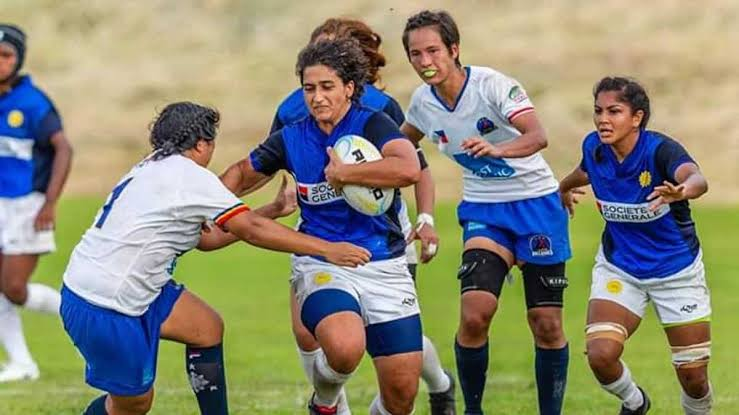Grit, Gumption and Glory – The Story of India’s Greatest Test Victory
Kartikay Dutta, Undergraduate Batch of 2023 and Gaurav Nandan Tripathi, Undergraduate Batch of 2020 Bruised, abused,

Amiya Kumar, Undergraduate Batch of 2023
Unfamiliar sports are not the only ones struggling to infiltrate into the Indian sporting culture. Even global sports such as Rugby, which has grown in popularity of late and is estimated to be the ninth most popular sport in the world with 410 million dedicated fans located worldwide, encounter serious predicaments while drawing people into the sport in India. Similarly, the Ice Hockey Association of India struggles to keep Indian fans interested. Why can’t these sports replicate their global popularity in India? Will they ever hit the heights that cricket, and more recently, football and tennis have among Indian fans?
Let’s take a look at the accomplishments of the young athletes who dream of making a name for their respective games in our nation.
Rugby
Scrumqueens, an international rugby organization, endowed Sweeti Kumari with the title of ‘International Young Player of Year’ and the Asian Rugby Federation describes her as ‘the continent’s fastest player’. However, Sweety has failed to garner fame in India. She is not the only immensely talented Indian Rugby player who is lesser-known among sports fanatics. In fact, the Indian Women’s Rugby team has made significant progress since its international debut in 2009. Their historic win in the Asia Rugby Women’s Championship left rugby fans and even their coach in disbelief. The team ranked third after beating highly ranked opponents and qualified as contenders for the Rugby World Cup.
The perception around rugby is one of the biggest reasons these successes haven’t attracted sufficient media and public attention. The sport is seen as rough and limited to male players. Yet, the Indian women’s team, comprising working mothers, housewives and students challenged stereotypes and tore down gender barriers. With an extraordinary performance, tremendous grit and determination, they proved their mettle by emerging victorious.
The urban population abstains from playing the game due to the misconception that Rugby is a violent sport. Rugby in India is played mostly by the Adivasi community. 60% of the national men’s and women’s team are constituted by people from tribal areas. While the increase in the sport’s popularity has suffered repeatedly at a national level, it has invariably led to social mobility and transformation at the grassroots level.
There are achievements to be proud of in the men’s team as well. Owing to his transcendently impressive performance for the u-19 and senior teams, Chittoranjan Murmu became the first tribal boy from Odisha to get a permanent job in the Indian Army. But this achievement too has been swept under the carpet of a media agenda that refuses to expand its scope.

Ice Hockey
Ice hockey is another popular sport worldwide that lacks support in India. The collision sport involves two teams who try to hit a puck into a goal with long wooden sticks in an ice rink. Similar to rugby, the women’s team has outperformed the men’s team here too. Even though the men’s team has participated in the ‘Challenge Cup of Asia’ since 2008, they still haven’t achieved a win in their name.
The lack of infrastructure hampers the performance of the team. In 2016, the national team trained at “I-skate”, a miniature ice rink in Ambience Mall, Gurgaon that is 1/4th the size of an international arena. This resulted in them being daunted by the arena at the tournament and constantly tripping and falling. Diskit Anmago, a member of the team, claims that the team needs good equipment and a lot of time on ice to practice. The scant resources given by the government remain an obstacle for a team fuelled by passion for the sport.
The desire to succeed in spite of the injustices is what led the Indian Women’s ice hockey team, composed entirely of Ladakhi women, to secure their first win at the Challenge Cup of Asia in 2017. This was only made possible due to the efforts of the ingenious General Secretary of the Ice Hockey Association of India, Harjinder Singh. Singh’s unyielding commitment to publicise the sport outside the confines of Ladakh has led to its growing popularity in Delhi, Haryana, Uttarakhand, Maharashtra and Shimla. Harjinder Singh has also single-handedly financially assisted the team. The one-man army’s effort may be tremendous, but without more consistent, organizational support, the team continues to fall just a couple of steps short of reaching the heights of success they deserve.

A trend that is unmissable in these sports is the high level of performance from the women’s teams in comparison to the men’s teams. The former’s efforts are a massive step towards annihilating the myths regarding the weakness of women’s bodies and challenges gender inequalities at its core.
Regardless, sporting culture in India will only flourish once the governing bodies are held accountable for their actions. A possible step for this is bringing ports associations under the Right to Information (RTI) Act and allowing for questions about remuneration, fund allocation, international exposure, pensions for sportspersons and the dearth of sports infrastructure. Cricket hogs the lion’s share of coverage in sports columns and TV channels don’t broadcast these tournaments for viewership.
It’s high time we give due credit to the battles of these unsung heroes that we know nothing about.